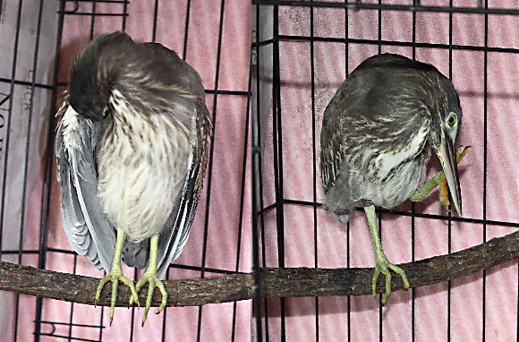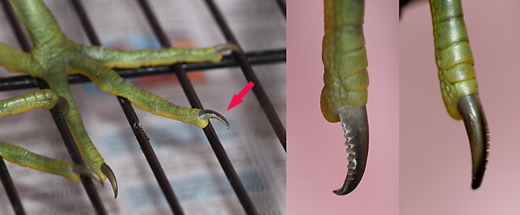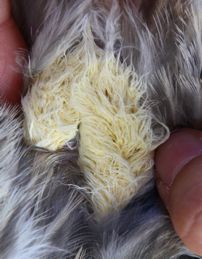The efficient functioning of feathers is crucial to birds. How else can they effectively fly from predators, catch preys, keep warm, etc. To maintain feathers in tip top conditions, birds regularly preen them and keep them waterproof. Regular bathing in water or dust helps remove dirt accumulated on the surface of the feathers. Some birds sunbathe while others make use of ants to help remove ectoparasites, commonly known as anting.
In nesting chicks, the parent birds regularly preen them. This may continue even after fledging. But how does a rescued Little Heron (Butorides striatus) chick maintain its feathers? It doesn’t. Not until very much later. Once the juvenal feathers were fully formed, only then did the chick began to preen. With a long and flexible neck, the bill managed to reach almost every parts of the body, everywhere except the head. Here, the toes came into play (above).
The middle and longest toe of herons has a comb-like structure at the side of the claw. This pectinate claw is a preening tool. Such a claw is also seen in Barn Owl (Tyto alba), nightjars and bitterns. The comb-like edge develops in the chick only when the feathers are fully formed. The middle toe of the left leg (above left, arrowed) shows the pectinate toe in close-up on the inner surface (above middle). The image on the above right shows the structure on the toe of the right leg.
Herons also have powder-downs, a special type of feathers found around the breast area, rump and sometimes on the back and thighs. In the case of the chick, only two patches around the breast area were present (left). These downs grow continuously and disintegrate to form powder, used in preening, expecially when there is grease on the feathers. The bird is said to pick up the down in its bill, passes it to the serrated claw of the middle toe to apply it to the feathers being preened.
YC Wee & Wang Luan Keng
Singapore
December 2007
Reference:
Martinez-Vilalta, A. & Motis, A. (1992). [Family Ardeidae (Herons)]. Pp. 376-429 in del Hoyo, J., Elliott, A. & Sargatal, J. eds. Handbook of the birds of the world. Vol. 1. Ostrich to ducks. Barcelona: Lynx Editions.












2 Responses